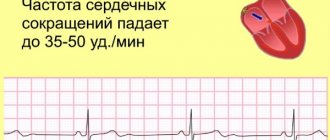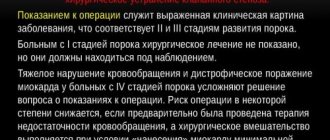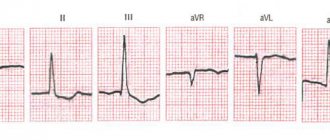Accelerated heartbeat: what is it?
If a person's heart beats too many times per minute, medical professionals talk about a condition called tachycardia. What it is? This is an excess of the optimal number (90 times per minute) of contractions of the heart muscle.
One type of such human heart disease is sinus tachycardia. This is a situation where the heart rate (heart rate) increases against the background of a moderate heart rate.
What happens to the cardiovascular system affected by this disease, and is it dangerous? In a healthy body, the electrical impulse originates in the sinus node and continues in the main order, resulting in regular contraction of the ventricles and atria.
For heart problems, the electrical impulse also begins in the sinus node. However, a more frequent heartbeat is provoked by an increase in the frequency of electrical impulses that come from the sinus node.
Sinus tachycardia ICD 10 indicates dysfunctional functioning of the cardiovascular system and requires adequate measures. After all, timely treatment of sinus tachycardia allows a person to maintain his health for many years.
Very often it is diagnosed in people who suffer from heart disease, in children and in pregnant women. Also, similar problems arise with pain during angina pectoris, acute myocardial infarction and other diseases of the heart muscle.
Tachycardia in children
30.09.2021
Probably, every parent has more than once noticed an increased heart rate in their child, which arose against the background of emotional stress, intense physical activity or elevated temperature. It is important to investigate the cause of the formation of tachycardia , whether it arose as a result of pathological changes or whether its occurrence is physiological and there is no reason for concern.
The word "tachycardia" is translated from Greek as "fast" and "heart", in other words the heart rate is excessively increased. In children, heart rate varies and depends on the age group.
If the heart is functioning properly, then its work is usually not felt, but if it begins to contract at an accelerated rate, the child notices symptoms such as weakness, rapid heartbeat, and tinnitus . Such unnatural rapid contraction of the heart is called tachycardia .
Types of tachycardia. Symptoms and treatment
There are 3 types of childhood tachycardia : sinus; paroxysmal; chronic.
- Sinus tachycardia . With this type of tachycardia, the activity of the sinus node increases, as a result of which the heart rhythm changes. This form of tachycardia can occur as a result of excessive physical activity or due to disturbances in the functioning of the heart . Sinus tachycardia can be both physiological and pathological. Physiological appears with vegetative-vascular dystonia at a time when the child begins to actively grow. Pathological tachycardia occurs due to organic damage to the heart . The main difference between sinus tachycardia in children is that it usually comes and goes gradually. In children, the symptoms are mild and manifest themselves in rapid heartbeat. In order to cure sinus tachycardia it is enough to eliminate the causes of its occurrence.
- Paroxysmal tachycardia is an attack of heartbeat with a frequency of 180-200 beats per minute, suddenly starting and also stopping unexpectedly. During such an attack, the child becomes frightened; he may also be bothered by weakness, abdominal pain , shortness of breath, cyanosis, and sweating. Paroxysmal tachycardia in children is divided into supraventricular (occurs in case of abnormalities in the regulation of the heart ) and ventricular (children get sick in rare cases, but the disease has a disappointing prognosis, especially in infants). to stop supraventricular tachycardia by reflex: hold your breath, squeeze your abdominals, induce vomiting, strain as hard as you can, press on the eyeballs. Cardiac glycosides are used for treatment, and after the attack has stopped, therapy is continued with maintenance medications.
- Chronic tachycardia in children is manifested by chest , low blood pressure, and asphyxia. The attacks are often accompanied by loss of consciousness or convulsions. This type of tachycardia occurs due to congenital heart in a child. Treatment of the chronic form consists of changing lifestyle: following a daily routine; adhere to a healthy diet enriched with vitamins and microelements; perform hardening. It is also important to protect the child from stress and intense physical activity.
Left unattended, tachycardia can cause heart failure. Therefore, it is necessary to carefully monitor your child’s health and pay close attention to his complaints of malaise. If you suspect any disease, you should immediately consult a doctor .
Published in Cardiology Premium Clinic
How it appears
This disease can be diagnosed in completely healthy people of different age categories. However, it is more common in women and men of older age groups with heart problems. Sinus tachycardia can often be detected in a small child.
What causes an increase in the number of heart contractions, and what are the causes of a disease of this nature? In a healthy body, the automatism of the sinus node increases during psycho-emotional or physical overload, as well as with excessive consumption of coffee and other caffeine-containing products. Thus, the body ensures optimal blood supply to all organs during those moments when it performs strenuous work.
In other words, this is a completely adequate reaction of a healthy body to the active work of the sympathetic nervous system. Also, sinus tachycardia code ICD can also be observed in a person with a completely healthy heart, but if he is infected with any infection, suffers from anemia, or has problems with the thyroid gland. In addition, it is worth noting that such problems can be caused by such means as:
- aminophylline;
- glucocorticoid hormones, etc.
Causes
The disease is provoked by the following factors:
- heart failure and a high risk of heart attack, myocarditis, cardiosclerosis, etc.
- disruptions of the endocrine system: can be provoked by thyrotoxicosis, increased production of hormones such as adrenaline in pheochromocytoma;
- physical and psycho-emotional stress: stress, excessive enthusiasm, hard work;
- pregnancy: sinus tachycardia during pregnancy is quite common and requires close monitoring by the medical professional who is caring for the woman’s pregnancy;
- disorders of the autonomic nervous system: neurosis, affective psychosis; cardiopsychoneurosis;
- congenital anomalies of the body's development.
All these factors that cause problems with heart rhythm in a healthy person, in women during pregnancy or in children, can be observed in combination, or they can appear one at a time.
Treatment and prognosis
In case of sudden attacks of tachycardia, the child should be taken out into the fresh air, tight clothes should be removed, a damp handkerchief should be placed on the forehead, and then a doctor should be called. If there is no pathology, and hormonal changes and stress lead to an acceleration of the heart rate, to treat tachycardia in children, the cardiologist will prescribe drug therapy (beta-blockers, cardiac glycosides, calcium antagonists, sedatives). Auxiliary measures: physical therapy, valgus techniques. To alleviate the condition, a diet is recommended in which it is undesirable to consume chocolate, tea, spicy, and salty foods.
Children who follow the doctor's recommendations usually return to their previous lives and activities. In rare cases, when the disease develops due to other serious pathologies that cannot be treated conservatively, surgery is prescribed.
Symptoms
The nature of the manifestation of the symptoms of this disease is largely determined by the degree of its severity, duration and characteristics of the course.
Symptoms of ICD10 tachycardia are the presence of rapid heartbeat, a feeling of heaviness and pain in the left side. A person may also experience a feeling of shortness of breath, shortness of breath and weakness.
Pregnant women with similar problems experience disturbed sleep, increased fatigue, decreased appetite and performance, and a general deterioration in their psycho-emotional state. Children may experience some moodiness, depression and low mobility.
Diagnosis and treatment
Vertical sinus tachycardia requires immediate diagnosis and treatment.
To identify such a disease, it is necessary to carry out a number of studies. Among them, the leading role is given to the ECG. After all, daily Holter ECG monitoring is highly informative and harmless to the patient.
How is sinus tachycardia treated? Heart rate must be brought to the optimal level.
It involves a number of measures to reduce the purity of heart contractions and is carried out with the help of sedatives, as well as consultations with a psychologist. If there is reflex or compensatory tachycardia, it is necessary to eliminate the causes of the problem. Otherwise, therapy to reduce heart rate can cause a drop in blood pressure and only worsen the situation.
Diagnostics
The task of a cardiologist who examines a child with suspected tachycardia is to make sure that the signs he has do not indicate other diseases, for example, bronchial asthma. Also during the examination, he looks for the cause of the disease. To do this, the specialist uses:
- ECG and daily monitoring to analyze how the heart rhythm changes during the normal activity of a small patient;
- EchoCG and MRI to make sure there are no heart pathologies;
- an electrophysiological study to check how the electrical impulse travels through the heart muscle;
- laboratory methods: urine, blood analysis;
- EEG of the brain to make sure that the activity of the central nervous system is not impaired.







